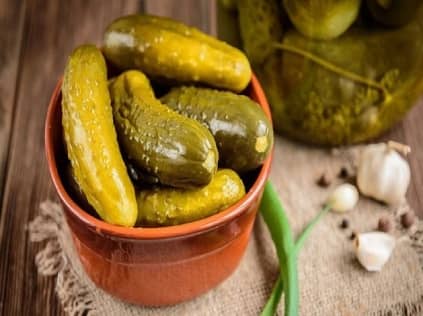It's almost time for pickle jars filled with different vegetables to take their place in your kitchen. Is it lemon, vinegar, rock salt, table salt, plastic bottle, or glass bottle to use in pickle, which is the most delicious form of seasonal fresh vegetables that you will prepare from a single ingredients or mixed ingredients? You will find the answers to your questions and the tips of pickling in this article.
Selecting Jar, Vegetable, and Other ingredients

Pickle is known to be the most sought-after appetizers alongside dishes such as bulgur pilaf and dry beans. Pickling period starts in August-September every year and initially gherkin, green pepper, home-grown ornamental peppers, beans, and cabbage are pickled in jars. However, the vegetables and jars chosen are also very important for the flavor of your pickle.
- The vegetables selected must be fresh and firm. For this reason, select them carefully and one by one.
- Jars should be thoroughly cleaned and should not have any odor.
- The volume of your pickle container depends on how much ingredients you will use. A 5-liter pickle container will be sufficient for 3 kg of pickling vegetables.
- You can prepare your pickles in glass or plastic (PET) jars, depending on your preference.
- Jar sizes can be chosen as large or small depending on your preference. Thus, you can open a jar of the appropriate size as per the number of your guests.
- Always add garlic as an indispensable pickle ingredient in terms of flavor and vitamins.
- Grape vinegar should be used instead of lemon juice in pickles.
- Since table salt has a thin and delicate structure, it is not suitable for pickling. Use rock salt (coarse salt) in your pickle. Salt, which dissolves slowly due to its structure, increases the flavor and robustness of pickle and ensures the settling of its aroma.
Tips of Pickling at Home

How is pickle prepared? One of the main answers to the question is the aroma, hardness, and salt amount of the pickle. For a good pickle, always apply the following.
- While pickling, thoroughly wash vegetables and pickle jars and provide a hygienic environment.
- Neatly place vegetables in jars by leaving minimum space between them. You can press the vegetables well so that there is no space between them.
- Place chopped vegetables at the bottom of the jar and all vegetables at the upper side of the jar.
- Rock salt and garlic are the most important factors in making long-lasting pickles with a firm structure.
- Make tiny holes on the ingredients to have firm pickles.
- Use only drinking water for brine.
- If you prefer, you can use celery and parsley leaves, bay leaves, garlic, black peppercorns, small hot peppers, cloves, and cinnamon sticks, provided that you do not add them all together to your pickle jars.
- After adding all of the ingredients, including flavorings, to the jar, fill the brine up to the uppermost level of your vegetables.
- Store your jars in a dark and not too warm corner of your kitchen cabinet to prevent mold growing.
- Observe the color of vegetables to see if they are pickled. If your vegetables have turned yellow, then your pickle is ready!
2 to 3 weeks is enough for a good pickle, but you should periodically open the pickle jar to check for any rotting vegetables and discard them, if any. Allow 10 days to taste the pickle.
Sarkap glass and PET jars are suitable for pickling. You can request our PET jars, which have a large variety in volumes, in the size you prefer for pickling.


